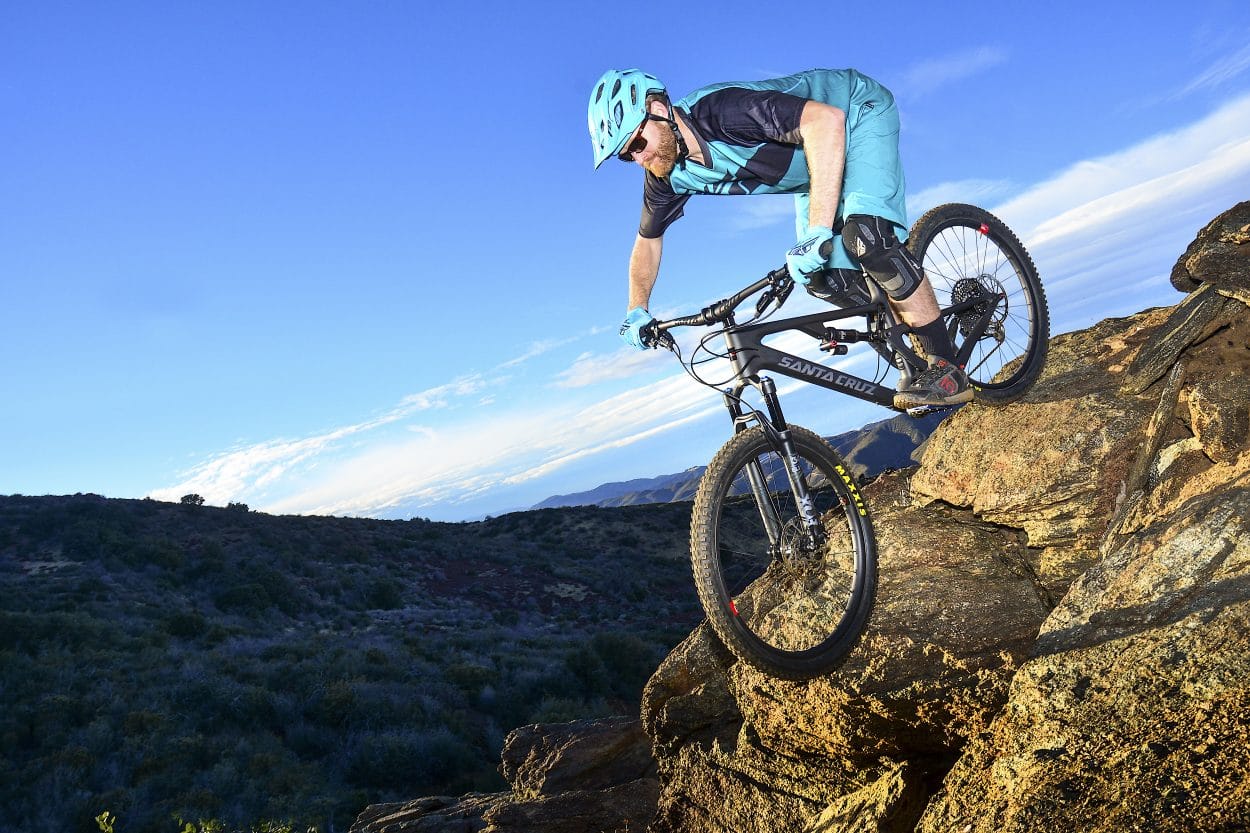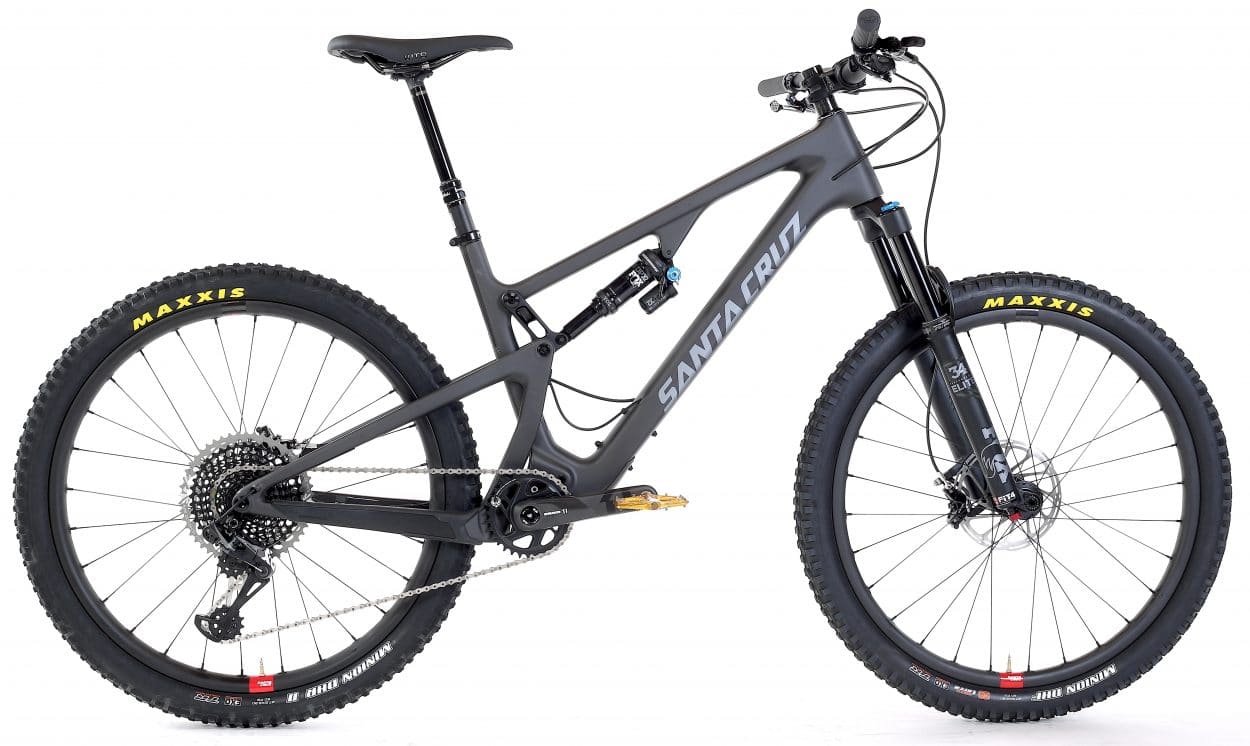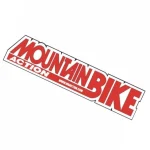Bike Test: Santa Cruz 5010
Santa Cruz 5010
The Santa Cruz 5010 handles like an oversized BMX bike, climbs like a cross-country bike and descends like a long-travel enduro machine. This is Danny MacAskill’s geared bike of choice, so that has to speak volumes in and of itself. That’s right; we said it. Finally, a versatile trail bike that has the possibility of being the only bike in your garage. The 5010 wasn’t designed to win an expert-level cross-country race or a GRT enduro, but if you only had one bike, you could show up at either and have a rad time.
WHAT IS IT MADE FROM?

The 5010 we tested was the carbon CC model, which has a carbon front and rear triangle. It also comes in lower-priced aluminum models. Santa Cruz did a great job of improving an already iconic bike from years past. For the current model, version 3, Santa Cruz slackened the head angle half a degree and the seat angle by 1.4 degrees.
The reach grew a welcomed 15mm, and the entire wheelbase extended 26mm on our size large. The internal cable routing was unique and direct, with minimal cable activity caused by suspension movement. The molded frame protectors on the chainstay, seatstay and downtube are extremely effective.
WHICH COMPONENTS STAND OUT?

The Santa Cruz Reserve 27 carbon rims were an awesome spec on this bike. We were curious how this bike would feel with the 37mm rims and 2.3-inch tires. DT 350 hubs always have our approval; they are a nice complement to the Santa Cruz Reserve hoops. We appreciated the Santa Cruz Palmdale lockons attached to the Santa Cruz AM carbon bar; sometimes it is the little things that make a difference. Contact points on a bike always get the most attention.

Our 5010 came with a 12-speed X01 Eagle drivetrain with 175mm Carbon 148 DUB cranks, a 32-tooth sprocket, an ultrawide-range 10- to 50-tooth cassette and Guide RSC brakes with Avid Centerline 180mm rotors.
HOW DOES IT PERFORM?

Setting sag: We played around with air pressure and rebound settings a lot early on in the test. In the end, we settled on a little less pressure, which put sag right at 30 percent, and a faster rebound, 2 clicks from slow, which balanced the bike well. We set up the fork with 25 percent sag and adjusted the rebound to 6 clicks from the slowest setting. Riders over 180 pounds might prefer the feeling of the suspension with a volume spacer that will make it ramp up a little harder. This will allow you to run a little less air pressure with a firmer feeling as the suspension compresses.

Moving out: The wrecking crew rode over 100 miles on familiar trails aboard the 5010 without issue, and ride times rivaled riders’ personal bests on their own machines. This is highly unusual for a test bike. The Hi-Torque staff was waiting in line to get a ride on it. A short, 50mm stem matched the long top tube and was extremely comfortable and confidence-inspiring for our 6-foot-tall testers. The bars come stock at 800mm wide, and we threatened to cut them a little early on. But, after a few rides, we welcomed the added stability. We experienced a few pedal strikes at the beginning of testing while climbing with the low 334mm bottom bracket height, but we adapted quickly, and it wasn’t a real issue. We wouldn’t give up the low center of gravity on descents for anything. Santa Cruz uses VPP suspension with the Fox DPX2 Float Performance Elite shock. With three compression settings actually worth using, the 5010 can be made efficient in each discipline. The DPX2 is the perfect companion to this bike. It allows a full lockout without sacrificing bump compliance on the stiffest setting. In the open mode, it has 10 additional clicks of compression to micro-tune for your descent. For those who hate change or don’t want to reach down and turn the compression lever, the center (medium) setting is the perfect neutral for climbing and descending. The front end is connected with a Cane Creek 40 IS integrated headset that is simple and effective. The Fox 34 Float Performance Elite fork perfectly balances the shock tuning and makes for an extremely confident and comfortable experience Climbing: Santa Cruz got it right on this one. With a 425mm chainstay, the back wheel tucks right in behind the seatpost, making both climbing and manuals easier than expected. The Maxxis Minion 27.5×2.3-inch DHF and DHR tires climbed a bit heavy, but the trade-off was worth it when they demonstrated their Velcro-like characteristics on the descents. More often than not, the climb is just a means to get to the descent, and the 5010 makes all that suffering worthwhile.

Cornering: The top tube is an ideal 620mm on this size large, which allows Santa Cruz to use a stock 50mm stem and tie in the 66.5-degree head tube angle. This bike corners like it’s on rails and still has a roomy cockpit for climbing. Short chainstays make this bike naturally active and playful.

Descending: Stock on this bike is the all-new 150mm (for our size large frame) Rockshox Reverb Stealth seatpost that telescopes unusually low, adding further confidence on the descents. With the Flip Chip, you can lower the bottom bracket a few millimeters with one bolt in less than a minute, which slackens the head tube to 66.2 degrees. In this “SoLow” position, we dealt with a lot of pedal strikes from an already low bottom bracket (at 334mm), and the slacker head angle actually felt slower through the corners. That being said, once you replace the stock 2.3-inch tire with a beefier 2.6-inch plus-sized tire, the slacker fork angle and lower bottom bracket height are equalized and the world is back in balance. We did an equal amount of riding with flat and clip pedals. We suffered more pedal strikes with the flat pedals’ larger surface while climbing than with the clips, but we wouldn’t give up that low center of gravity that we experienced going down the hill for anything.
TRICKS, UPGRADES OR TIPS?
Heavier riders will definitely benefit from volume spacers in the suspension. Specific suspension tuning makes the 5010 go from good to great. Our test bike had higher-end stock components, so most upgrades would be more weight- than performance-related. We loved the Maxxis Minion tires in our zip code, but the bike is versatile enough that you could put on a lighter cross-country tire and line up for a race. Side-entry bottle cages are a must on this bike due to the cable routing.
BUYING ADVICE
Santa Cruz made one thing difficult about the 5010, and that is deciding which model you can actually afford. Starting with the 11-speed, aluminum-framed models at $2699 and expanding to the full-carbon XTR 12-speed at $9499, there is a model for everyone! Our test bike weighed just under 28 pounds, with pedals, making the $6799 price a deal at only $245 a pound! The Santa Cruz 5010 is one of the most playful and able trail bikes we have ever tested. If you are only allowed one bike and you aren’t racing any single discipline, this just might be your next bike!


www.santacruzbicycles.com
THERE ARE SO MANY WAYS TO GET MOUNTAIN BIKE ACTION
Mountain Bike Action is a monthly magazine devoted to all things mountain biking (yes, that’s 12 times a year because we never take a month off of mountain biking). It has been around since 1986 and we’re still having fun. Start a subscription by clicking here or calling (800) 767-0345.
Available from the Apple Newsstand for reading on your iPad, iPhone or iPod Touch.
Subscribe Here
Contact us via email at [email protected]







